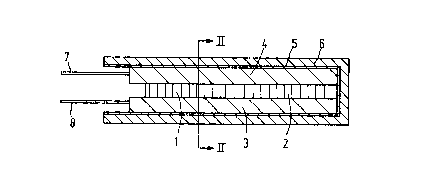Some of the information on this Web page has been provided by external sources. The Government of Canada is not responsible for the accuracy, reliability or currency of the information supplied by external sources. Users wishing to rely upon this information should consult directly with the source of the information. Content provided by external sources is not subject to official languages, privacy and accessibility requirements.
Any discrepancies in the text and image of the Claims and Abstract are due to differing posting times. Text of the Claims and Abstract are posted:
| (12) Patent: | (11) CA 1281532 |
|---|---|
| (21) Application Number: | 1281532 |
| (54) English Title: | METHOD OF MANUFACTURING A SELF-REGULATING HEATING ELEMENT |
| (54) French Title: | METHODE DE FABRICATION D'UN ELEMENT CHAUFFANT AUTOREGULATEUR |
| Status: | Expired and beyond the Period of Reversal |
| (51) International Patent Classification (IPC): |
|
|---|---|
| (72) Inventors : |
|
| (73) Owners : |
|
| (71) Applicants : | |
| (74) Agent: | SMART & BIGGAR LP |
| (74) Associate agent: | |
| (45) Issued: | 1991-03-19 |
| (22) Filed Date: | 1987-01-20 |
| Availability of licence: | N/A |
| Dedicated to the Public: | N/A |
| (25) Language of filing: | English |
| Patent Cooperation Treaty (PCT): | No |
|---|
| (30) Application Priority Data: | ||||||
|---|---|---|---|---|---|---|
|
ABSTRACT:
"Method of manufacturing a self-regulating heating element"
A method of manufacturing a self-regulating heating
element having a resistor with a positive temperature
coefficient as a heat source, the resistor(s) being located
within a thermoplastic casing between metal parts which it
(they) contact(s) in a heat-exchanging manner. For safety the
element is provided with a double insulation: one part which
is manufactured by moulding and which is, secondly, provided
internally and/or externally with a layer of an elastomer by
means of a solution.
Note: Claims are shown in the official language in which they were submitted.
Note: Descriptions are shown in the official language in which they were submitted.

2024-08-01:As part of the Next Generation Patents (NGP) transition, the Canadian Patents Database (CPD) now contains a more detailed Event History, which replicates the Event Log of our new back-office solution.
Please note that "Inactive:" events refers to events no longer in use in our new back-office solution.
For a clearer understanding of the status of the application/patent presented on this page, the site Disclaimer , as well as the definitions for Patent , Event History , Maintenance Fee and Payment History should be consulted.
| Description | Date |
|---|---|
| Inactive: Adhoc Request Documented | 1994-03-19 |
| Time Limit for Reversal Expired | 1993-09-21 |
| Letter Sent | 1993-03-19 |
| Grant by Issuance | 1991-03-19 |
There is no abandonment history.
Note: Records showing the ownership history in alphabetical order.
| Current Owners on Record |
|---|
| N.V. PHILIPS GLOEILAMPENFABRIEKEN |
| Past Owners on Record |
|---|
| ANDRE M.A. VAN BOKESTAL |
| HENRI L.P. LORRAIN |